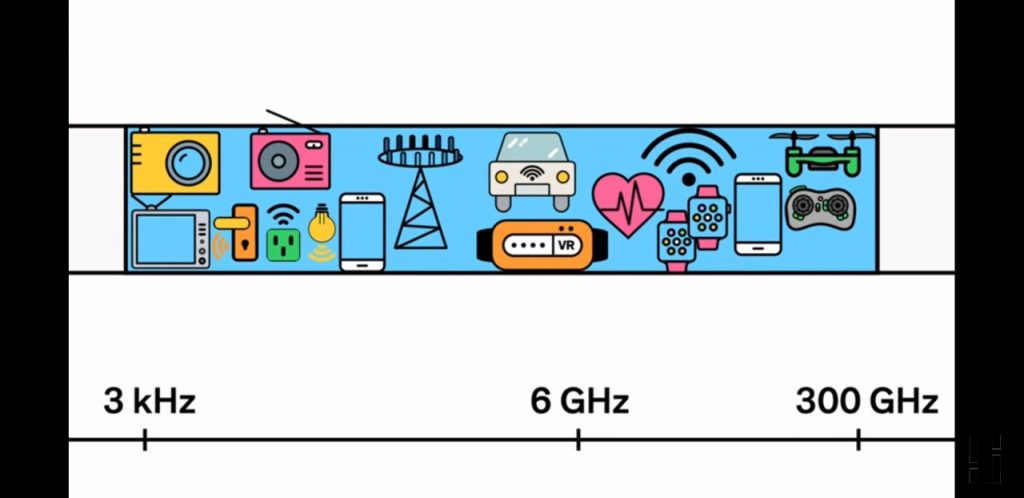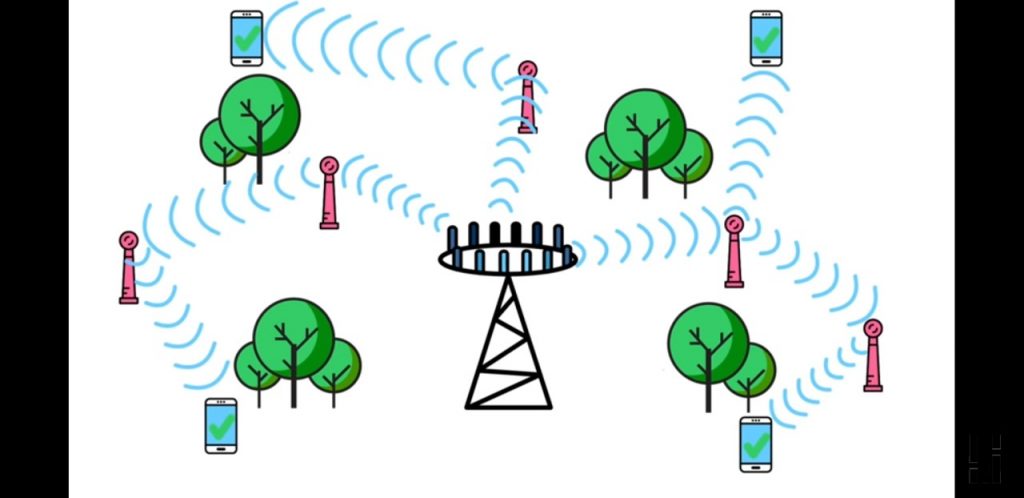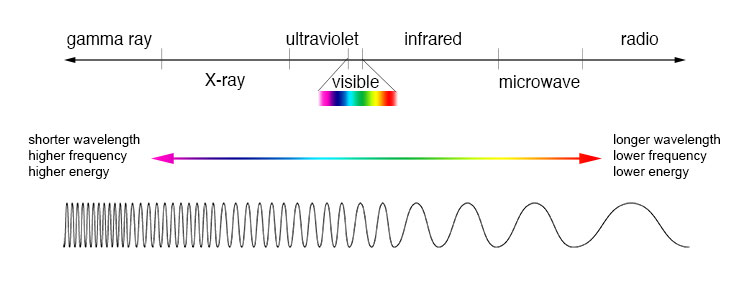The recent spread of COVID-19 has led to an upsurge of pseudo-scientists, WhatsApp doctors and false information. Within this array of convoluted statistics and details, the general public has also witnessed the rise of various conspiracies. One of the theories that have emerged during this unprecedented time is the threat of 5G and the harmful health effects 5G towers around the UK will have on the general wellbeing of the public. Despite the widespread hype and consternation regarding this theory, it is still unclear what 5G is. By deconstructing the nature of the wireless communication service, we will gain a more genuine insight into the implications of setting up 5G towers across the country as well as its various benefits and drawbacks.
What is 5G and why is it important?
It has taken a decade to effectively research and develop wireless communication 5G technology. Many carriers have rolled out 5G services through mobile devices, however, a more conclusive rollout is pending. Essentially, 5G is the fifth generation of mobile broadband that has supplanted 3G and 4G in terms of latency (the time taken for a wireless device to complete an action that it has been instructed to perform), widespread capacity and supply. This implies that there will be greater global interconnectivity as online interactions will occur in real-time. The implementation of 5G was among one the key promises outlined in the Conservative election manifesto, as Boris Johnson pledged that “Gigabit broadband [would be] sprouting in every home.”
The promise of fast and efficient broadband has been a common assurance within many recent political campaigns in the UK. Theresa May guaranteed £600 million worth of funding to develop fibre-optic technology whilst David Cameron vowed to similarly create the fastest broadband network in Europe. Efficient access to contemporary online resources therefore absorbs a large proportion of the government’s budget. The emphasis on extending the scope of technology such as 5G stems from the constructive impact the internet has on the economy. Improved access to the web cultivates potential for inclusive growth, socio-economic development and productivity that could possibly contribute to the overall GDP of the country and connect remote populations to global markets. Therefore, the structural importance of optimising access to online resources is integral to strengthening the economic foundations of a nation and further developing novel areas of commerce. The various political pledges and promises are therefore better understood when reviewed within this context.
Nonetheless, the multiple conspiracies that have developed around 5G are not derived from concern regarding the detrimental economic impact it will have, rather the effect it will have on the welfare of citizens. Before further exploring some of the dangers of 5G, we need to consider how 5G actually operates and what this technology consists of.
How does it work?
By providing a general overview (void of any complicated scientific jargon) we can harness a more in-depth perspective on the scientific credibility of the conspiracies that have been widely circulated.
There are various types of 5G technology that help deliver the latency and speed that it claims to offers, these inlcude Millimeter Waves, Small Cell tower networks , Beamforming and Full Duplex. Millimeter Waves technology extends the purview of the radio-frequency spectrum (a part of the electromagnetic spectrum which consists of radio frequencies between 30Hz to 300 GHz) allowing more devices to connect and prevent over-crowding.

A visual representation of the extension in the range of frequency within 5G technology and how it allows more devices to connect.
These sorts of waves cannot travel through objects but are absorbed by rain and plants. To mitigate this issue, Small Cell networks are in place. These are high power cell towers that broadcast signals across large distances. However as aforementioned, the high-frequency Millimeter Waves struggle to travel through obstacles, therefore lots of low powered stations/Small Cell network towers need to be abundantly distributed across specific areas of the country so as to prevent this interference and improve the receptivity of the signals.

A relay of Small Cell towers transmitting signals around obstacles.
Beamforming refines and focuses the streams of data being emitted – preventing interference and allowing greater input and output of data. Furthermore, full duplexing allows data to be transmitted back and forth through the same frequency – contributing to the speed and capacity of the technology. the Small Cell towers, in particular, have been the central issue in Britain.
Advantages of 5G
Notwithstanding the anger directed towards these towers and the subsequent acts of arson and harassment following the online conspiracies regarding 5G, there are some distinct benefits of the technology.
The main feature of the technology that constitutes the greatest advantage is its latency – as mentioned earlier, latency essentially means reaction time or the time between a command and an outcome. It is 200 times faster than 4G which operates at around 200 ms, roughly corresponding to human reaction time. 5G works at a rate of 1ms, eclipsing the reaction rate of 4G technology by far. This means that 5G can send and receive information in real-time – enabling it to act as a substitute for real-time interaction. By doing so, 5G broaches a portal of endless possibilities and applications. Such possibilities include the creation of a network of self-driving cars that are able to communicate with traffic lights, air sensors and aerial drones all whilst avoiding accidents (within the span of a millisecond) as they know exactly where they are in real-time. This concept can be applied to autonomous trains, delivery trucks and planes.
Additionally, 5G can be used to perform surgeries in remote locations or similarly used in other circumstances where distance and timing are crucial to achieving a specific outcome. The technology can be used to encourage innovation and efficiency in various industries such as agriculture, retail and manufacturing as well as in the domestic sphere for gaming, research and general internet usage. It can, therefore, be seen that 5G is integral to achieving economic expediency and could potentially enable Britain to spearhead a technological overhaul within the commercial realm. Its potential benefits also explain its precedence on the political agenda – allowing us to engage with the reasons behind why world leaders are looking to incorporate it into their economic and domestic frameworks.
Disadvantages of 5G
In contrast to these somewhat futuristic uses, there are palpable health risks associated with 5G. The main concern regarding this technology is that the radiofrequency radiation (RFR) disrupts the make-up of DNA, causing oxidative damage, premature ageing and in the worst situations, cancer.
However, these theories have being countervailed by studies on RFR – the radiation is somewhat commonplace and isn’t innately dangerous. RFR is emitted from microwaves, X-rays, ultraviolet light, infared light and even the sun – it is released from any of the sources featured on the electromagnet spectrum.

The Electromagnetic spectrum
In order to try and situate the danger, greater consideration needs to be given to the circumstances that could change the inherent nature of these allegedly harmless sources of radiation. The risks of 5G are contingent upon whether RFR becomes ionising or non-ionising which in turn depends on many more micro-reactions such as nuclear decay and the effects of exponential thermal pressure on molecules. ionising radiation is lethal whereas non-ionising radiation can be found within our own homes. Despite the fact that 5G doesn’t seem to pose an immediate threat, studies on the effects of the technology are not clear cut – although non-ionising radiation does not parallel ionising radiation in terms of detrimental health effects, there is a distinct possibility that it could still impact well-being.
There remains a sliver of doubt regarding 5G’s safety, accelerating the spread of conspiracies. In light of the current research, many could potentially construe these rumours as authentic or at least partially valid. Additionally, it can be argued that the government deserves some degree of criticism for giving greater priority to an economic venture as opposed to the public’s health – consolidating the notion that monetary benefits of such technology to offset health risks to the public. Whether 5G poses immense benefit or threat therefore hinges upon people’s perception of health and personal priorities.
This interlinks with the wider issue at hand regarding politicisation in the wake of a crisis. In the midst of the current dystopian climate, sodden with death and suffering, politicising extraneous issues such as the implementation of 5G towers can be considered futile and insensitive. However, such issues are ultimately dependant on people’s perception of a fulfilled life. Many will see the economic benefits that 5G offers as a way of expanding and streamlining their businesses – providing the financial stability they need to live a full and content life. Whereas others may argue that the financial advantages cannot indemnify the health risks that the public will be continually exposed to. Although 5G has considerable benefits and drawbacks, whether it should be implemented is fundamentally dependant on political inclination and personal priorities.


